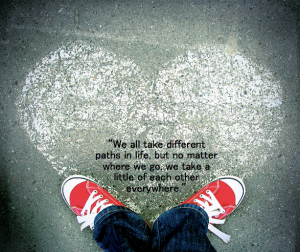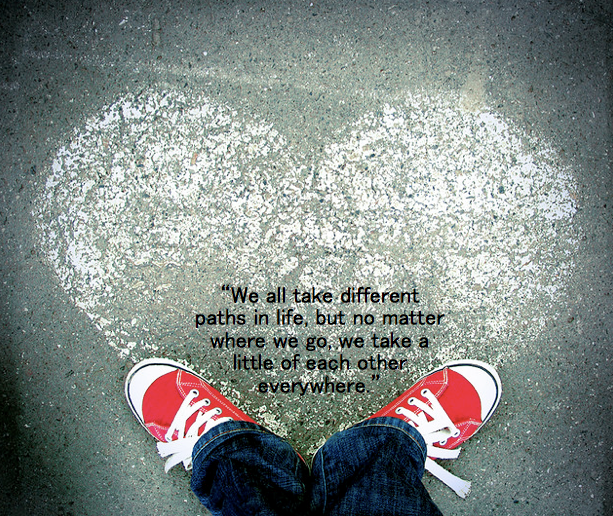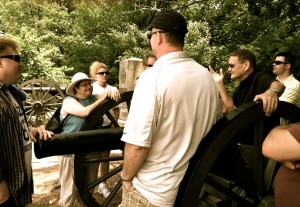
So a little bird tweets me that there is some sort of list out and about that has my name on it. Neat-o!
Only, upon further inspection, I examined the list and realized, Hey. Let’s all simmer down here. The fact that my name appears on that list is silliness. I know for a fact there are other edu-tweeters out there that are waaay more influential than me. (And have a significantly higher Klout score, for what it’s worth. (Not much.)) Plenty of fantastic people are represented, from whom I learn an awful lot on a daily basis. But this post is not going to debate who should or shouldn’t be on that list. To do so would give it even more attention than it warrants.
What’s worth recognizing is that the list exists. And why is that? Because someone is paying attention to us. We, as a collective network of educators who care about children and their futures, are sharing with one another on a regular basis and helping to influence our practices in positive ways. People are noticing.
I’m thinking about my network. I can easily name ten people who influenced my practice today. Do I need to publicize it in a list? No.
You know who you are.
This influence is not limited to the intertubes, of course. I’m considering the people who’ve shaped me into the educator I am trying to be today. Most of those people aren’t on Twitter. They don’t blog. They don’t have Facebook accounts, can’t get into Google+ no matter how many invites they receive (thanks for nothing, Google), and they surely were not at ISTE. But their influence, care, compassion, and support have forever changed me. They’re the people that demand I put the phone away when we’re out to dinner. Or at an administrative retreat. (I was taking notes, I swear!)
You know who you are.
Tonight I was all set to compose my post-ISTE reflection post, and it seems as though I am now going to combine both my reflections of that event with my ramblings about online popularity. They’re weirdly related.
Cliques. Clusters. Cadres. Cohorts. Cavorting. Cackling. Keynotes. Abuse of alliteration. Cafes. Conversations. Contempt for Comic Sans. Connected Principals. Some sort of fancy dance. All of this and more, at ISTE 11! Many of the ISTE reflection posts have focused on the power of relationships, the importance of conversations, and the jr.-high-esque social mentalities that can ensue when you bring a whole bunch of people together. #sigh
I’d like to highlight two of my favorite memories from ISTE. First, this: Kids displaying their awesomeness. Like this sharp-dressed young man:
 who eloquently explained how his school’s project involved using technology to improve our Earth’s ecology. I listened to his podcast using ear buds that probably 100 other people placed in their ears. And I didn’t really care. He shared his thoughts in carefully dictated English, his second language, mind you. This group had it made. They sent out recruiters – pint-sized bits of adorableness- into the crowds to ask attendees, “Do you want to hear our presentation about technology and ecology?” Heck yes, I do. And then they led me to the booth. Gold.
who eloquently explained how his school’s project involved using technology to improve our Earth’s ecology. I listened to his podcast using ear buds that probably 100 other people placed in their ears. And I didn’t really care. He shared his thoughts in carefully dictated English, his second language, mind you. This group had it made. They sent out recruiters – pint-sized bits of adorableness- into the crowds to ask attendees, “Do you want to hear our presentation about technology and ecology?” Heck yes, I do. And then they led me to the booth. Gold.
To the kids who inspire me every day, from those in my first sixth grade class to the children I only briefly interacted with at ISTE: You are amazing. You know who you are.
My second favorite memory of ISTE is Irene from the Newbie Lounge. I wish I had taken a photo of Irene. She was truly awesome. By no means in her first years on the job (or her first twenty years), Irene sat on the couch with her iPad 2 and called out, “Can you help me with this?” as I walked by, with just a few minutes to go before our Connected Principals panel session. (Thanks, by the way, to everyone who attended. It was slightly overwhelming.) I wanted a bottled water desperately. I glanced at the mile-long concessions line longingly and then thought, What the hell am I thinking? This person needs me. So I sat with Irene for about twenty minutes and walked her through the process of bookmarking a website on her Safari browser. She was truly astounded that whenever she wanted to visit that wiki filled with resources from the last session she attended, she could just go to her bookmarks and … poof! There it was. She was so happy. I was so happy.
Irene, thank you for centering me and helping me realize how much I love being a teacher. I will agree with others that the shared conversations in hallways, cafes, museums, sidewalks, and #Edubros venues were certainly well worth the price of admission. I became a tad bit emotional having to say goodbye to some very good friends on my last day there. Yes, I said it, friends. Real live avatar-people that turned into friends. Shocking! Thank you to the presenters and attendees, young and old, who inspired me at ISTE.
You know who you are.
I guess, that in the end, that’s all that really matters. That you know the positive influences you have on the work and lives of others. I agree with Kristina that many of us felt as though something was missing before we developed this supportive network of professionals via Twitter, blogging, and other media. The connections have certainly added value to our lives.
Yet in a way I also disagree. I am not so sure that something was missing so much as it was lost. Lost inside of each of us. After experiencing powerful learning, working to positively influence others, and doing the right things for kids, every one of us should be able to examine our personal accomplishments and be proud. Be very, very proud. We will make mistakes, falter, and lose our way. We will share ideas and then take too long to act on them. Just pick yourself up, put a plan in place, do something, and continue to be awesome. No list can define our ability to do so. Only you can make that happen.
You know who you are.





